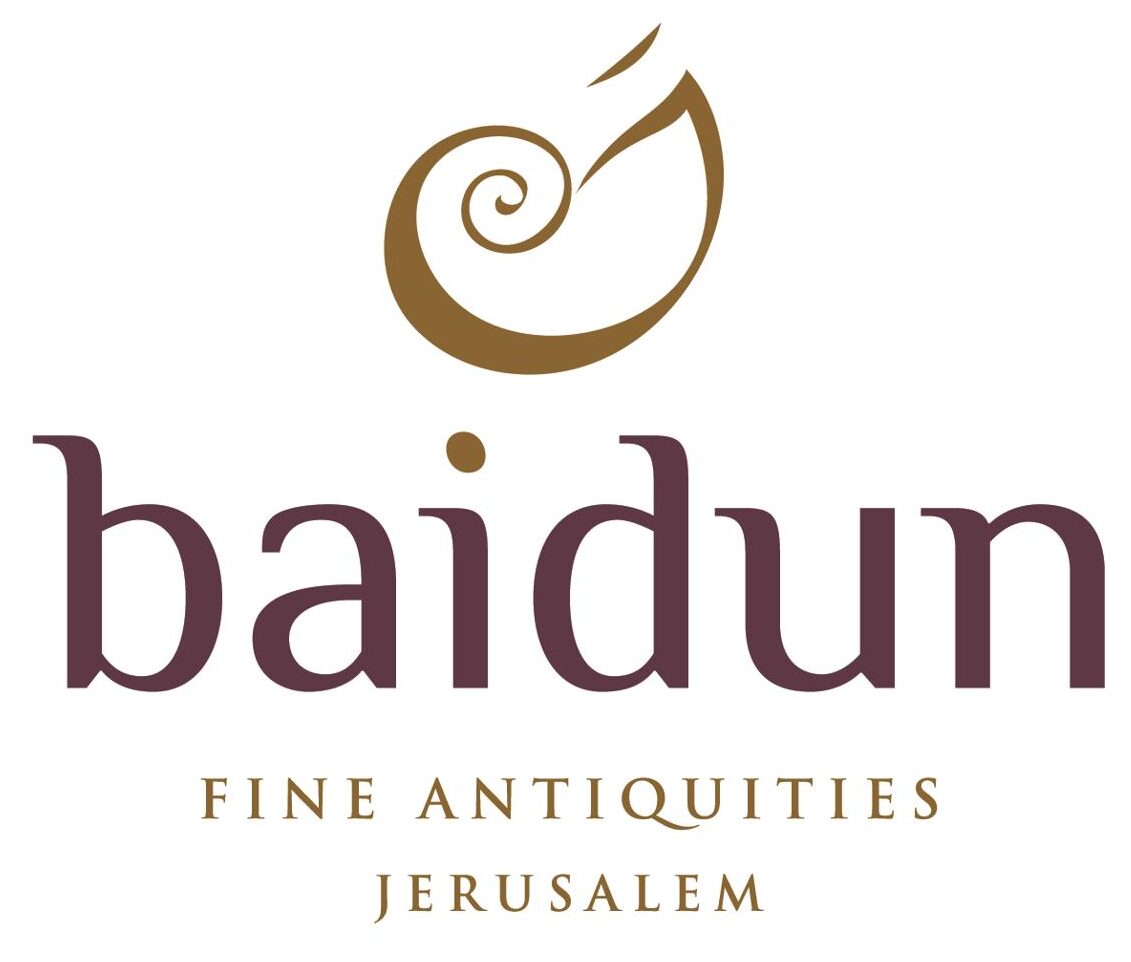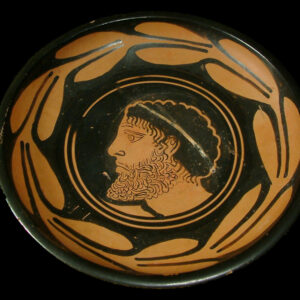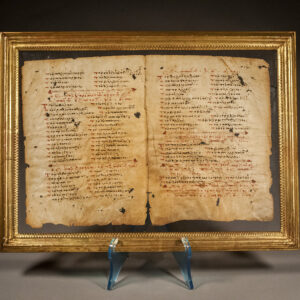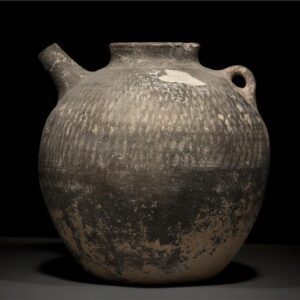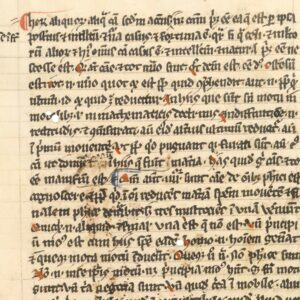The initial in white, yellow, and blue, the shape of the ‘Q’ formed by an elaborate interlace pattern of white-vine scroll outlined in red, the infill with stylised foliage against a ground of green, 45 lines of text written in a handsome rounded protogothic transitional script in two columns, incipits in uncials touched red, initials in red (approximately 50 words, or 10 lines, trimmed from the bottom of each column, verso with adhesive stains to upper margin, not affecting the text). In a modern cloth binding. The recto opens with the end of thestandard Lucan prologue and continues with the beginning of Luke’s Gospel (Luke 1:1-25) — ‘Quoniam quidam multi conati sunt’; the verso continues with Luke 1:29-76. The layout of the text is unusual and interesting: verse 1 is here treated as the start of the book; often verses 1-4, the Dedication to Theophilus, are treated as a prologue, and verse 5 as the start of the Gospel proper. Both theMagnificat and the Benedictus, two of the six biblical canticles that were sung every week in all monasteries, are here written with enlarged red initials, their incipits in rustic capitals touched with red dots, and with left-justified red initials at the start of each phrase. The first lines of verses 18, 56, and 57 are treated similarly. The abstract, stylised design of the initial, with its intricate white-vine pattern and stark palette of primary colours testifies to the influence in Romanesque decoration of pre-Christian ornamental traditions. The fine example in the present leaf is closely reminiscent of an initial ‘A’ cut from another Romanesque bible, now at the Free Library in Philadelphia (Lewis E M 16:10)

Collection
ROMANESQUE INITIAL ‘Q’ on a Leaf from a Monumental Bible
Description
Description
Reference #
MS_BZ_1004
Civilization
Byzantine
Size
L. 38.2 cm , W. 27 cm
Condition
Fine Condition
Price
Price available upon request
Provenance
Baidun Collection
Additional Information
| Civilization | Byzantine |
|---|---|
| Material | Manuscripts |



